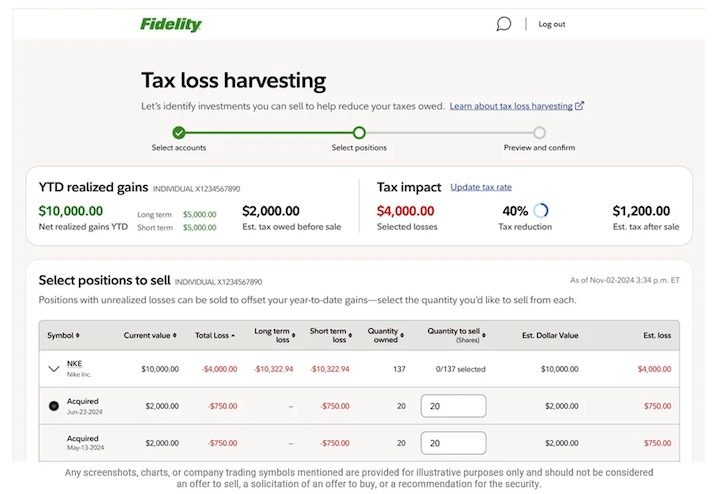When you bring a new employee on board, a structured onboarding process is fundamental for their success and integration. It begins with crafting a compelling job advertisement and conducting interviews that assess fit. Once you’ve extended an offer, preparing for their first day sets the tone. From workstation setup to training and team integration, each step matters.
Comprehending these vital elements can greatly improve retention rates and employee satisfaction. What steps can you optimize further?
Key Takeaways
- Craft a compelling job description that clearly outlines roles, responsibilities, and candidate requirements to attract qualified applicants.
- Conduct structured onboarding activities, including training and team engagement, to help new employees acclimate and build relationships.
- Schedule regular check-ins during the first week and beyond to provide support, monitor progress, and address any concerns.
- Ensure resource availability by setting up workstations, software access, and necessary tools before the employee’s start date.
- Collect feedback regularly to adapt and improve the onboarding process, enhancing new employee integration and retention.
Start of the Hiring Process
When you’re ready to begin the hiring process, crafting a compelling job advertisement is essential, as it serves as the first point of contact between your organization and potential candidates.
Clearly articulate the position’s roles, responsibilities, and candidate requirements to attract qualified applicants. Consult with senior department members to identify necessary skills tests that align with the job expectations. This collaboration guarantees you’re looking for the right attributes in your candidates.
[embed]https://www.youtube.com/watch?v=45k4pQ6nwSc[/embed]
Furthermore, consider conducting office tours for potential candidates.
This allows them to connect with your workplace culture before they commit.
Finally, verify the strengths and experiences of final candidates by calling their references, confirming they meet the expectations set during the hiring new staff phase, paving the way for a successful new employee onboarding process.
Structured Interview Process
A structured interview process is designed to create a consistent and fair method for evaluating candidates, which in the end leads to better hiring decisions.
To implement this effectively, follow these steps:
- Predefine interview questions that align with job requirements and company culture.
- Keep candidates informed about their application status and next steps to improve their experience.
- Communicate expectations clearly during the interview to guarantee candidates understand what’s being evaluated.
- Conduct office tours for potential employees to strengthen their connection to the workplace and give insight into your company environment.
Offer Stage and Acceptance
Completing the structured interview process sets the stage for the offer stage, where the focus shifts to presenting the job offer and guaranteeing candidates feel valued. Ideally, you should present the offer via phone or in person to create a positive impression. Discuss salary expectations transparently, using a range based on various factors. Clearly outline roles and responsibilities to reinforce earlier discussions and set new hire expectations.
Coordinate the start date with the candidate’s notice period and vacation plans to manage scheduling effectively. Finally, communicate swiftly with unsuccessful candidates to alleviate anxiety and provide constructive feedback.
Task Importance Best Practice Present Job Offer Creates Positive Impression Phone or In-Person Presentation Discuss Salary Guarantees Transparency Use a Negotiable Range Outline Responsibilities Sets Clear Expectations Reinforce Interview Discussions Manage Start Date Shows Respect for Commitments Coordinate with Candidate’s SchedulePre-First Day Planning
Effective pre-first day planning is crucial for ensuring a smooth shift for new employees. This phase lays the groundwork for a seamless onboarding experience.
Here are key steps to take before the new hire arrives:
- Set up the employee’s workstation with all necessary equipment and tools.
- Create the employee’s email address and arrange access to required software and systems.
- Determine and configure necessary permissions to prevent access issues.
- Prepare a welcome packet containing vital information and resources reflecting the company culture.
Additionally, scheduling introductory meetings with team members and key stakeholders will help encourage early connections, easing the new hire’s adjustment into the workplace environment and promoting a sense of belonging from day one.
Employee’s First Day – Morning
When the new employee arrives on their first day, it’s vital to create an inviting and organized atmosphere to facilitate a smooth shift into their new role.
To start, provide easy office access by giving them necessary key fobs or direct contact details. Suggest a starting time an hour later than usual, allowing for personal preparation.
Conduct a short office tour to familiarize them with fundamental locations like toilets, the kitchen, and meeting rooms, ensuring they feel comfortable.
During the morning, introduce the new hire to team members to nurture connections and create a welcoming environment.
Finally, allow them to set up their workstation and get acquainted with the systems they’ll be using, promoting confidence for their tasks ahead.
Employee’s First Day – Afternoon
As the afternoon unfolds on your first day, you’ll receive a basic work itinerary that outlines tasks for the upcoming week, helping you acclimate to your new role.
You’ll likewise tackle some initial smaller tasks that align with your job description, allowing you to start contributing as you ease into your responsibilities.
Here’s what you can expect:
- Meet your onboarding buddy, who’ll be there to support you and answer any questions.
- Join your direct team for an informal lunch or coffee break, which cultivates rapport and encourages social connections.
- Familiarize yourself with workplace tools and resources.
- Wrap up with a brief check-in meeting to address any immediate concerns and gather feedback on your first-day experience.
Employee’s First Day – End of Day
At the end of your first day, you’ll participate in a brief check-in meeting designed to discuss your experience so far and address any immediate concerns that may have arisen.
During this meeting, you’ll set specific goals for the upcoming week, month, and three months, providing you with clear expectations and a roadmap for your integration.
Your supervisor will schedule future check-in meetings to guarantee structured follow-up and continuous support throughout the onboarding process.
Open communication is encouraged, allowing you to voice any challenges or questions you may have.
Furthermore, your feedback on the first day will be collected to identify areas for improvement in the onboarding process and improve future new hire integrations.
Employee’s First Week
Following your first day, the focus shifts to your first week, a critical period for acclimating to your new role and the company culture.
A structured itinerary can guide you through vital tasks and keep you engaged.
Here’s what to expect:
- Daily Check-ins: These guarantee you have the support and resources needed to succeed.
- Inter-departmental Meetings: Scheduled sessions help you understand different functions and cultivate collaboration.
- Skills-based Training: This training integrates with your regular schedule, allowing you to learn as you work.
- Documentation Completion: By the end of the week, confirm all administrative tasks are done, assuring you have the necessary tools and access for ongoing development.
This week lays the foundation for your future success.
Team Integration Activities
To effectively integrate into your new team, participating in team integration activities is essential for building relationships and encouraging collaboration. Organizing team lunches helps cultivate connections outside the formal work environment. Informal coffee breaks promote social interactions, making you feel welcomed and part of the team culture. Early collaborative projects allow you to work closely with colleagues, improving teamwork and belonging.
Regular feedback sessions during onboarding help you understand your performance and facilitate open communication. Furthermore, incorporating team-building activities, like icebreaker games, strengthens connections and camaraderie among team members.
Activity Type Purpose Team Lunches Build relationships Coffee Breaks Encourage social interactions Collaborative Projects Promote teamwork Feedback Sessions Encourage open communication Team-Building Games Improve camaraderieContinuous Support and Check-Ins
To guarantee new hires feel supported, it’s crucial to schedule regular check-ins after their first week and throughout their first year.
These meetings provide a platform for ongoing resource availability, allowing employees to voice concerns and seek guidance.
Regular Check-In Meetings
Regular check-in meetings are crucial for providing continuous support to new employees as they shift into their roles. Scheduling these meetings throughout the first year helps address challenges and promotes open communication.
Here are some key benefits of regular check-ins:
- Daily meetings in the first week help monitor progress and confirm necessary resource availability.
- Discussing performance metrics guarantees new hires align with company expectations from the outset.
- Encouraging feedback during check-ins allows organizations to adapt the onboarding experience to meet employee needs.
- Consistent communication improves employee confidence and satisfaction, contributing to higher retention rates.
Ongoing Resource Availability
As new employees acclimate to their roles, ongoing resource availability and support play a critical role in guaranteeing their success. Continuous support is essential, so schedule regular check-ins throughout the first year to address concerns and monitor progress.
This cultivates engagement and creates open lines of communication, encouraging you to voice questions. Here’s a table to help understand the key components of ongoing support:
Support Type Frequency Purpose Check-Ins Monthly Provide feedback and adjust onboarding Open Communication Ongoing Encourage questions and build confidence Resource Access Continuous Guarantee tools and information are available Feedback Collection Quarterly Identify improvements for future onboardingFrequently Asked Questions
What Are the 5 C’s of Employee Onboarding?
The 5 C’s of employee onboarding are Compliance, Clarification, Culture, Connection, and Confidence.
Compliance guarantees you complete necessary paperwork and training on company policies and safety protocols.
Clarification involves comprehending your job expectations and responsibilities.
Culture introduces you to the organization’s values and social norms.
[embed]https://www.youtube.com/watch?v=T-Ghwwi4d_Q[/embed]
Connection helps you build relationships with colleagues, cultivating a supportive network.
Finally, Confidence boosts your self-assurance in your new role, enhancing overall job performance and satisfaction.
What Are the 4 C’s of Employee Onboarding?
The 4 C’s of employee onboarding are Compliance, Clarification, Culture, and Connection.
Compliance guarantees you understand policies and complete necessary paperwork.
Clarification helps you grasp your job roles and performance expectations.
Culture introduces you to the company’s values and work environment, cultivating a sense of belonging.
Finally, Connection focuses on building relationships with your colleagues, promoting teamwork through social interactions and activities, which improves your integration into the organization.
What Are the Steps of Onboarding Employees?
To onboard employees effectively, start with preboarding activities like sending materials and setting up their workspace.
Next, conduct an orientation to explain the company’s structure, mission, and policies during completing necessary paperwork.
Focus on building a strong foundation by embodying company culture and values.
[embed]https://www.youtube.com/watch?v=TfOcbqjpRS8[/embed]
Pair new hires with mentors or buddies for guidance and social integration.
Finally, provide continuous support through regular check-ins to address concerns and gather feedback throughout their first year.
What Are the 6 C’s of Employee Onboarding?
The 6 C’s of employee onboarding are Compliance, Clarification, Culture, Connection, Capability, and Career.
Compliance guarantees you understand legal requirements and policies.
Clarification defines your job responsibilities and expectations.
Culture introduces the company’s values and mission, helping you feel aligned with organizational goals.
Connection nurtures relationships with colleagues, enhancing teamwork.
Capability focuses on developing your skills, whereas Career addresses your growth opportunities within the organization, promoting long-term success.
Conclusion
To conclude, an effective onboarding process is crucial for new employees’ success and integration into your company. By following these ten steps, from creating a compelling job advertisement to ensuring ongoing support, you can nurture a positive experience that promotes engagement and retention. Regular check-ins and team activities help build relationships, whereas structured training equips employees with necessary skills.
In the end, a thoughtful onboarding process sets the foundation for a productive and satisfied workforce.
Image Via Envato
Disclaimer: This story is auto-aggregated by a computer program and has not been created or edited by finopulse.
Publisher: Source link








